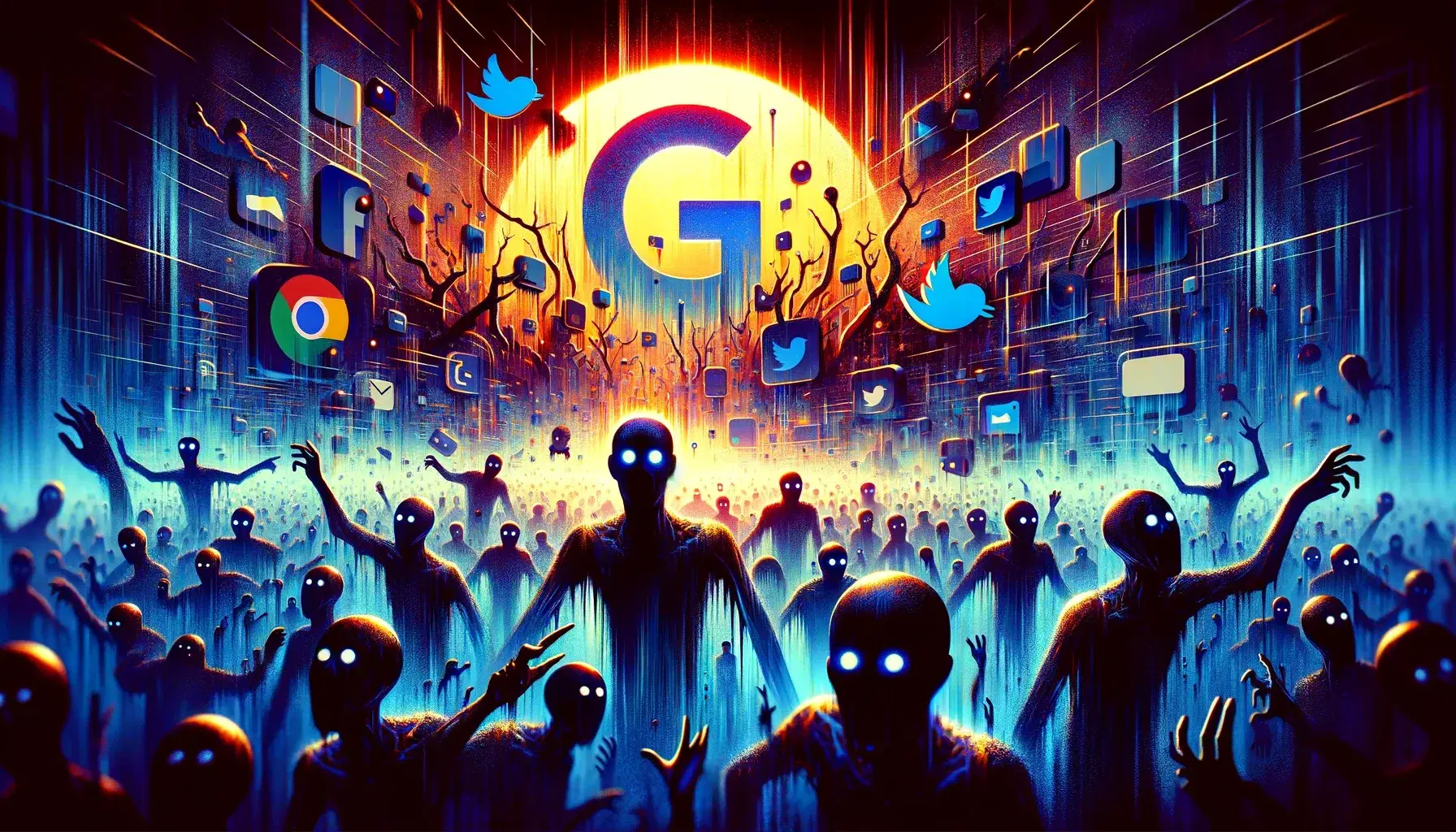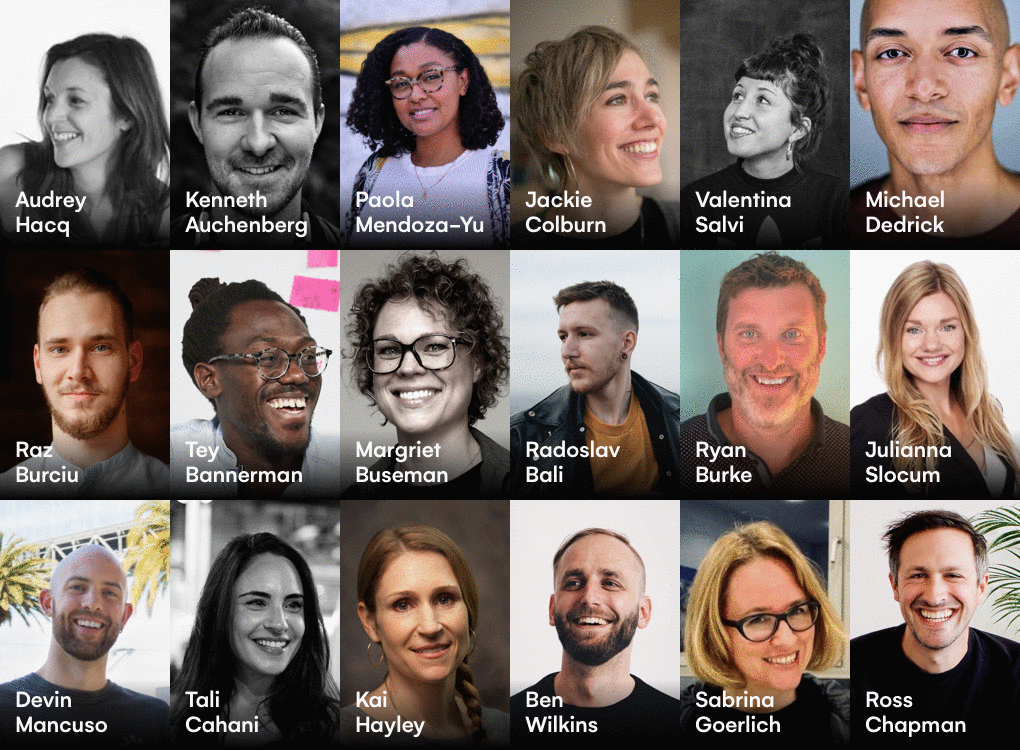10 flaming tips straight from Hot Ones.
Accessibility notice: This article contains a lot of animated GIFs (simple video loops without any strobe effect).
What do good user interviews have in common with celebrity guests working their way through an increasing path of pain of hot chicken wings in Hot Ones? More than you would think.
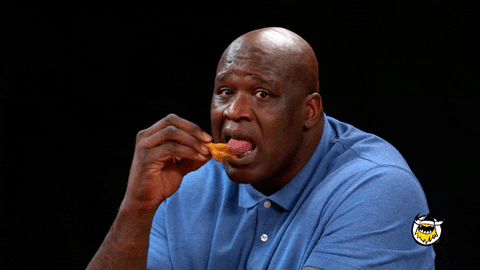
For those of you who don’t know: Hot Ones is a hugely successful YouTube web series created by Christopher Schonberger and produced by First We Feast and Complex Media, going into its 13th season this fall. In the course of one episode (which lasts anywhere between 15 and 30 minutes), host Sean Evans interviews celebrity guests while they both eat their way through 10 chicken wings, each of which is doused in an increasingly spicier hot sauce.
This concept leads to compelling interviews thanks to careful research and unusual, sometimes challenging questions. The celebrity guests gradually lose their inhibitions as the hot sauces climb the Scoville ladder and the universally challenging experience of hot food breaks down barriers between host and guest. Ricky Gervais rightfully described it as “Jackass meets Charlie Rose”.
Sure, unless you’re working for a company that has a vested interest in understanding people’s tolerance of hot food, you won’t be feeding your participants Scoville-challenged wings anytime soon. Once you scratch underneath the surface of this glowing lump of coal, however, chances are that you’ll find plenty to learn from for your next user interview.
So get your gloves on and sink your teeth into this 10-winged list of tips and techniques that are Hot Ones fireproof. They’re bound to fire your user interview game to the next level.

WING #1 PREP YOUR STEP
A recurring reaction of the guests on Hot Ones to Sean Evans’ questions is “How do you know that”. Yes, it’s a thing and it really speaks to how well their research is conducted.
In an interview with Drew Barrymore for her own YouTube interview series “The Art Of The Interview”, Sean Evans explains that he, producer Chris Schonberger and Evans’ brother Gavin will check out their guests’ catalogs and read and listen to previous interviews and podcasts with them to find out where they could dig deeper.
This type of profound research really isn’t unlike the user interview situation where you should have gotten as much information as you can about the person you’re going to be talking to. It sounds basic, but you really want to make sure that you talk to the right person and that they are someone who would actually be using the product you’re doing research about.
That’s why it’s so important to make a watertight screener that you send out to your potential participants to carefully select the right kind of person for you. Also make sure that you have a clearly stated research question that you want to answer.
That way, you can dive into the interview fully aware of who you’ll be talking to, what you’ll be talking about and why it matters.
WING #2 KILL THAT FEELING
When conducting user interviews, you want to make sure that you, the interviewer, are as neutral as possible. Don’t be presumptuous about what your users might feel, don’t show how you feel when your participants say or do something. You want to be open and accepting of whatever your participant, directly and indirectly, shares with you.
On Hot Ones, Sean Evans serves as a similar blank canvas who allows his guests to take up as much space as they want to (which in the case of the Jeff Goldblum interview leads to some very awkward, slightly uncomfortable interactions). Evans described himself as an “emotionless, disaffected host” in an interview with Billie Eilish (who awarded him with a high five) and generally believes that you shouldn’t interfere too much during the interview.
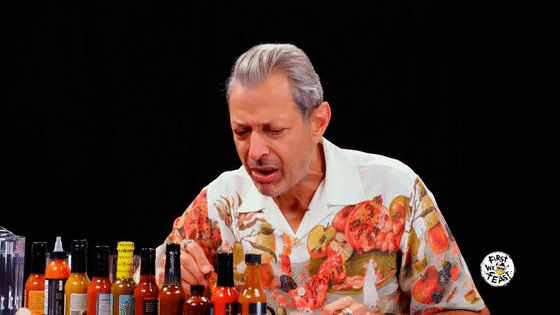
Keep it in mind: it doesn’t matter how much you like or dislike the person that you have in front of you. You have to leave your emotions, gut reactions and intuitive responses at the door. During the interview, you are your participant’s ally, your job is to build a rapport with them and you’re in this situation together.
WING #3 KNOW THAT FEELING
User interviews generally tend to be quite awkward and sometimes uncomfortable affairs. Both you and your participant are probably feeling at least a little self-conscious, if not insecure or nervous.
It’s up to you to acknowledge the awkwardness: break the ice by smiling or making a joke and show your participants empathy with their situation, mistakes, experiences and frustrations.
Empathy and support also set Hot Ones apart from the daredevil “Jackass” shows of this world with Evans’ and his team’s relentless focus on their guests’ well being. They provide them with tissues, milk, water, ice cubes, all of it as much as they want. Sean Evans will also warn his guests with the well-known phrase “Careful around the eyes” or will even warn daredevils like Coolio if they’re about to do something stupidly reckless.
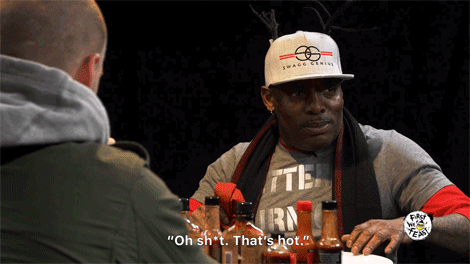
In user interview terms, that means if your participant is shy, unsure or feels self-conscious, a little empathy goes a long way. Tell your participants that it’s okay, that you know that this isn’t easy, that you understand, that they shouldn’t worry, etc. You’ll have a participant who’ll be more likely to open up, relax and feel less restrained.
It’s a fine, burning hot tightrope act to balance disaffectedness and empathy but one that will be so rewarding once you get the hang of it.
WING #4 MIND YOUR BODY TALK
Sean Evans is a man of many hand gestures as pointed out as well by super fan Brett Baker in a special Hot Ones episode where the tables were turned and Brett Baker got to interview Evans. Doing the show made him more aware that he was intuitively talking with his hands as it’s been commented on so often in the comments section beneath each Hot Ones video. It’s probably part of the appeal of Sean Evans as a likable, involved host.
You can learn something from that when doing your own user interviews, both for yourself and your participants. You, the interviewer, have the opportunity to set the tone, the vibe and when you make appropriate hand gestures. It shows that you come in peace, that you’re involved and (com)passionate.
Considering the times, your user interview will probably be online. In that context, eye contact, the visual cues of an open hand, counting on your fingers when presenting options or an inviting smile are essential to creating a personal, warm vibe. You can also improve your hand gesture game by recording your interviews and look back at how you came across.
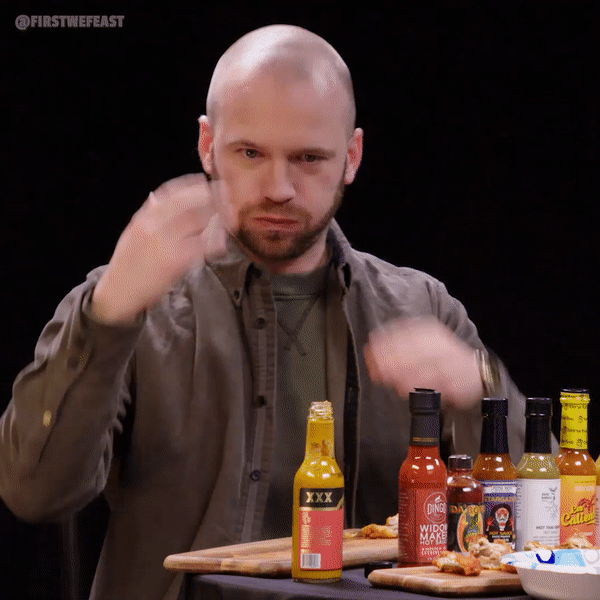
Avoid showing any negative emotions with your body, even if you’re bored or frustrated. Sit upright, look engaged and let your hands move freely. Make sure to hold back your instinctive facial or corporeal reactions to what your participants say or do, you don’t want them to feel embarrassed or self-conscious. Pay attention to your participants’ body talk to see when they’re being more engaged and where you could be asking successful follow-up questions.
As a final note to this very underrated skill of performing and reading body talk, it’s important to point out that hand gestures and body talk are culturally determined. If you’re interviewing a group of candidates from a different country, maybe do some research beforehand into the meaning of gestures of your target country or culture.
That way, you’ll know a bit better what your own body language is communicating to them and you’ll be able to understand better how your participants are feeling. Yes, it’s extra, but you’re knee-deep into this frankly absurd article, so we guess that you must be about as extra as they come.
WING #5 FREEDOM FOR ALL
In Hot Ones, there’s a wall of shame for guests who have prematurely bowed out of the interview because they couldn’t take the spicy wings anymore. Sean Evans will always try to encourage his guests to continue with phrases such as “You got this” or “Look at you cleaning wings” but there’s no mockery or finger-pointing involved when a guest calls it quits.
Each guest is allowed to go as far as they are comfortable with, which in the case of DJ Khaled really isn’t very far at all. Even there, Sean Evans gives DJ Khaled the opportunity to graciously abort his mission but as the braggadocious DJ Khaled is insisting that it doesn’t mean that he gave up, Sean Evans does call him out on that.
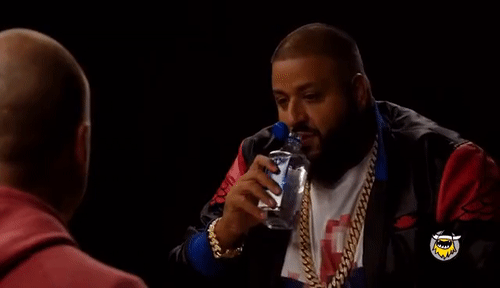
Having said that, the fact that he gives his guest total freedom to quit whenever they want but will work his way through the rest of the interview as he eats the violently spicy wings by himself (as he does in this Ricky Gervais interview), it does help to build a relationship of mutual trust.
Likewise, you want your participants in your user interview to have the same feeling of freedom that they would have in a Hot Ones interview. Make sure your participants feel and know that they’re free to explore, say, share, try and do whatever they feel like.
If you see that your participant is getting tired, has become less responsive or quiet, don’t be afraid to ask them if they want to take a break or even end the interview. They’re graciously giving you their time, so make sure that your participants know that they’re in control over how much of it they give to you.
WING #6 SAME PROCEDURE AS EVERY INTERVIEW, JAMES
Any good user interview consists of a fixed structure, a standardized procedure that you can follow. According to Steve Portigal, user interviews consist of 7 parts and I’m sure Mr. Portigal will be damn pleased to know that there’s some overlap with the structure of Hot Ones interviews too.
The structure of a Hot Ones interview has become standardized over 12 seasons. Sure, the show has switched up hot sauces that the wings are doused in, but they’ve never changed the concept of going from mild to violently hot at the end or changed the basic structural procedures.
Sean Evans will introduce himself, the show, explain the concept and ask his guests how they handle hot food (which Steve Portigal calls “Crossing The Threshold” and “Restating The Objectives”).
The show then proceeds with the 10 wings, each of which corresponds to 10 questions. Somewhere in the middle, there’s the recurring segment “Explain that gram” where the guest has to give more information about a couple of pictures Evans pulled from the guest’s Instagram account (usually around “The Tipping Point”).
The final wing gets an extra dab in the hottest of all hot sauces (so-called “the last dab”, a tradition on the show which started with Machine Gun Kelly) followed by a well-earned opportunity for the guests to plug a show, book, movie or whatever they have coming out at the time and want to promote (a relatively “Soft Close”).

It’s this kind of structure that gives the show and a good user interview a solid backbone. It also means that you can let the conversation drift spontaneously into whatever territory might be relevant for you, but you’ll always have the solid structural foundations to come back to.
WING #7 IT’S A CONVERSATION, NOT AN INTERROGATION
You shouldn’t underestimate the delicate balance of following a procedure without reading directly off of a script — you’re not working in a call center after all. It’s important that you have the questions that you want to ask in the back of your mind but do avoid going through them one by one.
If you feel like the person is giving you a standard, “hollow” reply (e.g. “How do you feel about your current job?” — “Yeah, it’s fine”), then dig a little deeper with some follow-up questions.
Case in point: in a Hot Ones interview with Drew Barrymore, she says: “My daughter Olive gave me some tips (for handling hot sauces)” after which Sean Evans asks “What are some of the tips?”. It’s a simple question, it’s not scripted but Evans shows that he is listening to his guests, showing that he is and giving his guests as much space and time as they like to share what they feel like sharing.
In the Hot Ones interview with Russell Brand, he talked about the talents of interviewer Howard Stern. According to Brand, he’s the kind of interviewer who “seduces” his interviewees into giving information they wouldn’t necessarily be comfortable sharing with any stranger.
Remember that you are also just a random stranger to your participants and that there’s a certain barrier you’ll need to break down before the feeling of strangeness disappears. The best way to do that is to try and make the interview seem as spontaneous as possible. You’d be surprised how much useful information you can get when you let a conversation go a bit more freely, even if it doesn’t always directly relate to your central research question.
WING #8 BUILD IT UP
In order to get to a state of spontaneous conversation, you really need to think about the build-up of your interview. Hot Ones proves the importance of a good build-up both in concept and content. You wouldn’t start a Hot Ones interview with the spiciest wing, as masterfully proven by the previously mentioned Eddie Huang who dramatically decided to dive into the deep end and start with the hottest wing first “to get it out of the way”. The results were, no surprise, catastrophic.

Content-wise, it’s only deep into an interview with Gordon Ramsay when Evans reads out some of the harshest restaurant criticism Mr. Ramsay himself was ever faced with. Ramsay, being the trooper that he is, responds in an incredibly relatable but honest way.
You should put the same kind of attention to build-up in your user interview. Don’t forget that you might be talking about topics your participant is uncomfortable with — money, sexuality, personal life, etc. When you think about the questions you want to ask, keep the more sensitive ones for later after you’ve built up some rapport.
If you don’t take it into account, your participant might freeze up on you and it could be impossible to thaw them back to life. The sensitivity of any given topic will also be culturally defined so make sure you do your research and check if there are any potentially sensitive topics in the culture of your participant (in as far as that can be known, seen and understood).
WING #9 THE PATH IS THE WAY
Evans doesn’t focus too much on getting to the last wing but focuses on the conversation and the wings in between instead. This strategy relieves the pressure on the guests and helps his guests to ease up without focusing too much on their painful destination (unless you rock it like Halle Berry that is).

That’s also how you should be conducting your user interviews: focus on your research objective(s) but don’t expect every question to immediately deliver the results that you’re after. Your questions are stepping stones.
Of course, clients will want an easy answer: Is the user going to buy our product? What defects does the product have? What prevents people from buying the product? Ultimately though, those questions will be answered directly and indirectly as your participant is talking and explaining.
More time per participant will always lead to more valuable, profound results and knowledge. It’s much better to make sure that your participant feels comfortable and open. With the right mindset, vibe and feeling, you can ask any question you like and you’ll get a valuable, honest response. Of course, that doesn’t always work, but it’s a nice goal to focus on.
WING #10 THE LAST DAB — TRUST IS A MUST
What it all boils down to is building a trustful relationship with your participant. Humor is an important factor in all of this. Not only is the concept of Hot Ones in itself ridiculous and funny, but also Sean Evans’ matter-of-fact style of speaking combined with his mannerisms and numerous, repeatable catchphrases (“Now it’s time to roll out the red carpet for you, my friend. This camera, this camera, this camera, let the people know what you have going on in your life”; “It’s tradition around here to dab the last wing, you don’t have to if you want to”; “Careful around your eyes”). That’s what makes the show such a marvelous, insanely epic thing to behold.
Evans knows that many celebrities are doing way too many boring, run-of-the-mill interviews and that they themselves are also bored with it (as acknowledged by Drew Barrymore) so he’s bent on giving his guests a nice experience, something fun that they won’t forget anytime soon and that can feel like as if they’re hanging out with a friend.
They can quit or take a break anytime they want, they get tissues, milk, vegan wings and milk are provided upon request (or in the case of DJ Khaled, you can even fly in your own wings because of course).
It’s these attentive details that make it such an inviting, funny, edgy, epic watch without ever steering into cringe-worthy, awkward territory where people are pressured into doing something they’re not comfortable with. A joke, laughter, giving your participants the option to take a break, to leave, empathy and understanding, it will all help for your participants to feel like they can also trust you.
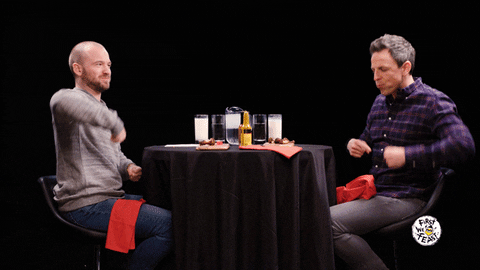
A COOLING CLOSE
Hot Ones is a unique show and most episodes serve as great inspiration for how to conduct successful interviews. In comparison to other, televised talk shows on the one hand (which oftentimes rely only on silly, funny games) and hour-long podcasts on the other (which dig very deep but are not always interesting for everyone), Hot Ones sits somewhere in the middle.
It’s a clearly visual show where the entertainment value relies on the guests’ reactions to the various hot sauces but not superficially so thanks to Sean Evans as the understated, straight-faced host who effortlessly jumps from profound questions about the state of the movie industry to tips for improving dog behavior (as he does in the Halle Berry interview).
Try to treat your user interviews as if it was a Hot Ones episode: anyone hypothetically watching your interview should feel interested, engaged and involved. The art of the interview involves a combination of various skills, techniques and a good deal of people skills and creativity.
If you’re still a bit wet behind the ears, you really don’t have to focus too hard on all of these tips at the same time. Do however listen and watch back to your interviews with these tips in mind and see if there’s anything you could do to improve. For an overview with some very concrete, more tips on conducting user interviews, make sure to check out Interviewing Users. How to Uncover Compelling Insights by Steve Portigal.
Ultimately, remember that your participant is a complete stranger, targeted by a random person (you) and requested to take an hour out of their day to talk to you. That’s why it’s important to make sure that your participants are relaxed, feel in control ofthe situation and that in an hour’s time, you can build a rapport with them.
You basically want to get your participants to a point where they trust you enough to follow you down whatever path you want to lead them to, without burning their mouths down to a smoldering pile of ashes of course. That privileged experience thankfully belongs to Hot Ones.

Co-written with Nout Van Den Neste

 Buy me a coffee
Buy me a coffee